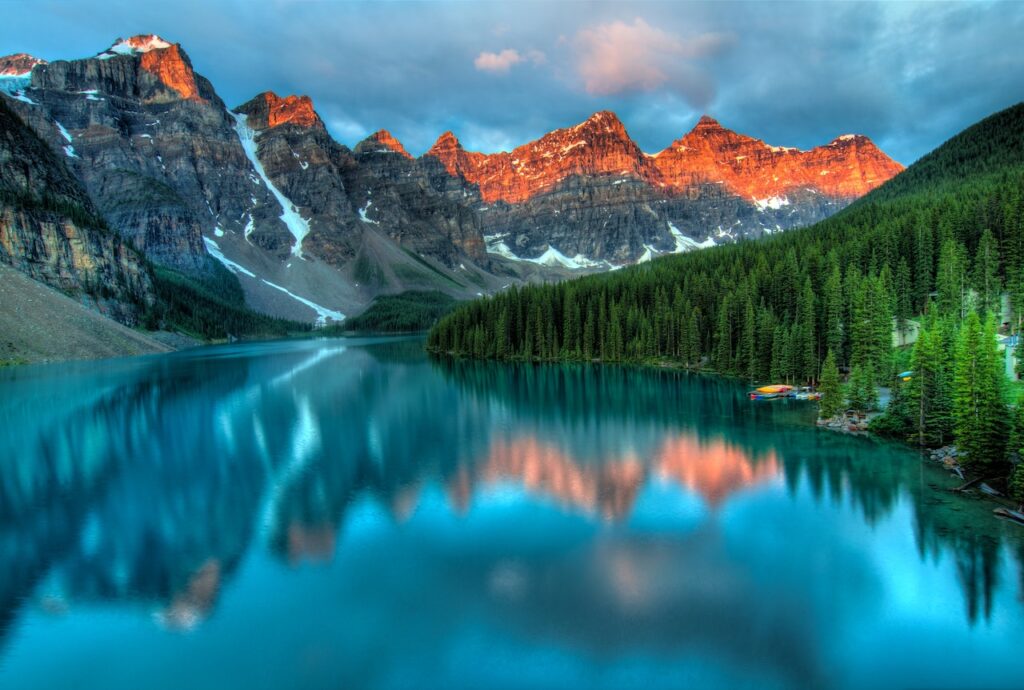
From the rugged landscapes of Alaska to the sun-soaked habitats of Florida, the United States boasts an array of national parks that are a haven for wildlife photographers. In this article, we’ll take you on a visual journey through the “Top 10 National Parks for Wildlife Photography,” each one a chapter in the grand story of the diverse and untamed wilderness that makes North America so extraordinary. Whether you’re seeking the majesty of grizzly bears in Alaska’s wilderness or the grace of elk in the Rocky Mountains, these parks offer not only breathtaking scenery but also incredible opportunities to capture nature’s most awe-inspiring moments through your camera lens.
Yellowstone National Park (Wyoming, Montana, Idaho):
Yellowstone is a wildlife photographer’s dream, offering an unparalleled opportunity to capture some of North America’s most iconic animals in their natural habitat. The park’s vast landscapes are home to a stunning array of wildlife, including herds of bison roaming the grasslands, elusive wolves and grizzly bears in the backcountry, and majestic elk against the backdrop of geothermal wonders. Birdwatchers can delight in photographing a variety of avian species, from bald eagles to ospreys. With its diverse ecosystems, Yellowstone provides year-round opportunities for wildlife enthusiasts.
Denali National Park (Alaska):
Denali’s wild and remote expanses are a playground for wildlife photographers seeking to capture the untamed spirit of Alaska. The park is renowned for its big game, with grizzly bears, moose, caribou, and Dall sheep frequently gracing its pristine landscapes. Whether you’re capturing a grizzly bear hunting for salmon in a river or a Dall sheep silhouetted against the towering peaks of the Alaska Range, Denali is a place of breathtaking encounters with North America’s most formidable creatures.
Everglades National Park (Florida):
The Everglades is a paradise for bird and reptile photography. This unique subtropical wilderness is teeming with life, from alligators lurking in the waters to manatees drifting through the mangrove swamps. Bird enthusiasts can revel in the opportunity to photograph a variety of wading birds, including roseate spoonbills and herons, in their natural habitat. The park’s unique ecosystems, including the sawgrass prairies and cypress swamps, offer endless possibilities for capturing the beauty of Florida’s wildlife.
Grand Teton National Park (Wyoming):
Grand Teton National Park’s stunning landscapes provide the perfect backdrop for photographing a diverse range of wildlife. Herds of bison and elk are a common sight against the grandeur of the Teton Range. Pronghorn, the fastest land animals in North America, can be photographed in open grasslands. The park is also a haven for birdwatchers, with bald eagles and ospreys soaring above its pristine lakes. Whether capturing the drama of a bull elk during rutting season or a bald eagle in mid-flight, Grand Teton is a photographer’s delight.
Acadia National Park (Maine):
Acadia is a coastal gem for wildlife photographers. Along its rugged shorelines, you can capture the beauty of seals basking on rocky outcrops and spot whales breaching the surface in the deep blue waters. The park is also home to deer and a variety of bird species, including puffins and peregrine falcons. The picturesque landscapes of Acadia, with its granite peaks and tidal pools, make it a fantastic destination for both landscape and wildlife photography, offering the chance to frame the natural world in exquisite detail against the backdrop of the Maine coastline.
Katmai National Park (Alaska):
Katmai National Park in Alaska is synonymous with brown bear photography. During the summer salmon run, the Brooks River provides a front-row seat to observe and photograph these massive bears as they fiercely compete for their catch. It’s a place where you can capture awe-inspiring images of brown bears leaping into the river to snag their next meal. The close encounters with these iconic Alaskan creatures make Katmai a premier destination for wildlife photographers.
Great Smoky Mountains National Park (Tennessee and North Carolina):
Great Smoky Mountains National Park offers a haven for photographers seeking to document the rich biodiversity of the southern Appalachian Mountains. Black bears, the symbol of the park, are a common sight, and capturing their playful antics or serene moments is a delightful challenge. The park’s lush forests are also home to white-tailed deer and a wide array of bird species. Photographers can explore the park’s scenic vistas and waterfalls while keeping an eye out for the diverse wildlife that inhabits this enchanting Southern wilderness.
Glacier National Park (Montana):
Glacier National Park in Montana is a paradise for alpine wildlife photography. The park’s mountainous terrain is inhabited by mountain goats, bighorn sheep, and marmots, offering fantastic opportunities to photograph these resilient creatures in their rugged habitat. The pristine lakes, glaciers, and dramatic peaks create a breathtaking setting for wildlife photographers who want to capture both the natural beauty and the remarkable fauna of the park.
Zion National Park (Utah):
Zion National Park in Utah is a desert jewel for wildlife photographers. The park’s red rock formations and unique landscapes provide the backdrop for capturing the lives of desert bighorn sheep, mule deer, and a variety of reptiles like collared lizards and desert tortoises. The contrast of vibrant desert flora against the sandstone cliffs makes for a visually striking setting for wildlife photography, especially during the golden hours of sunrise and sunset.
Olympic National Park (Washington):
Olympic National Park offers diverse ecosystems to explore and photograph. The park’s temperate rainforests provide habitat for Roosevelt elk, while black bears roam the dense forests. Along the coastline, you can capture sea otters, tide pool inhabitants, and coastal birdlife. The park’s unique combination of lush forests, rugged coastline, and alpine peaks provides a wide range of subjects for wildlife photographers seeking to capture the diversity of the Pacific Northwest’s natural world.